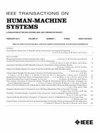单带与分带:通过微相步态捕捉实现智能跑步机控制,促进中风后康复
IF 3.5
3区 计算机科学
Q2 COMPUTER SCIENCE, ARTIFICIAL INTELLIGENCE
引用次数: 0
摘要
中风是主要的长期残疾,并造成与康复相关的重大经济负担。在脑卒中后康复中,偏瘫患者对瘫腿和非瘫腿之间的协调运动有特殊的需求。当患者在分离式带式跑步机上行走时,分离式带式跑步机可以通过降低该腿的皮带速度来有效地促进麻痹的腿。虽然有研究发现,分离式带式跑步机比传统的单带跑步机能产生更好的步态恢复效果,但分离式带式跑步机的高成本是临床上中风康复的一个重要障碍。在本文中,我们为单带跑步机设计了一种基于人工智能的系统,通过根据患者的微步态阶段即时调节皮带速度,使其像一个分带。这个系统只需要一个低成本的RGB相机来捕捉人类的步态模式。提出了一种新的微步态分类管道模型,用于实时检测步态相位。该管道基于自监督学习,可以根据实时视频校准锚点视频。然后,我们使用ResNet-LSTM模块来处理时间信息并提高准确性。采用实时滤波算法对跑步机进行平滑控制。我们已经在34名健康人和4名中风患者身上测试了开发的系统。结果表明,与ResNet50分类器相比,我们的系统能够准确地检测步态微相位,并且在训练中需要更少的人工注释。我们的系统“Splicer”是由AI模块推动的,在及时改变左右脚速度,在健康个体中创造偏瘫步态,以及在中风患者的力量发挥中促进麻痹侧对称方面,它的表现与劈带系统相当。这种创新的设计可能为偏瘫患者提供具有成本效益的康复治疗。本文章由计算机程序翻译,如有差异,请以英文原文为准。
Single-Belt Versus Split-Belt: Intelligent Treadmill Control via Microphase Gait Capture for Poststroke Rehabilitation
Stroke is the leading long-term disability and causes a significant financial burden associated with rehabilitation. In poststroke rehabilitation, individuals with hemiparesis have a specialized demand for coordinated movement between the paretic and the nonparetic legs. The split-belt treadmill can effectively facilitate the paretic leg by slowing down the belt speed for that leg while the patient is walking on a split-belt treadmill. Although studies have found that split-belt treadmills can produce better gait recovery outcomes than traditional single-belt treadmills, the high cost of split-belt treadmills is a significant barrier to stroke rehabilitation in clinics. In this article, we design an AI-based system for the single-belt treadmill to make it act like a split-belt by adjusting the belt speed instantaneously according to the patient's microgait phases. This system only requires a low-cost RGB camera to capture human gait patterns. A novel microgait classification pipeline model is used to detect gait phases in real time. The pipeline is based on self-supervised learning that can calibrate the anchor video with the real-time video. We then use a ResNet-LSTM module to handle temporal information and increase accuracy. A real-time filtering algorithm is used to smoothen the treadmill control. We have tested the developed system with 34 healthy individuals and four stroke patients. The results show that our system is able to detect the gait microphase accurately and requires less human annotation in training, compared to the ResNet50 classifier. Our system “Splicer” is boosted by AI modules and performs comparably as a split-belt system, in terms of timely varying left/right foot speed, creating a hemiparetic gait in healthy individuals, and promoting paretic side symmetry in force exertion for stroke patients. This innovative design can potentially provide cost-effective rehabilitation treatment for hemiparetic patients.
求助全文
通过发布文献求助,成功后即可免费获取论文全文。
去求助
来源期刊

IEEE Transactions on Human-Machine Systems
COMPUTER SCIENCE, ARTIFICIAL INTELLIGENCE-COMPUTER SCIENCE, CYBERNETICS
CiteScore
7.10
自引率
11.10%
发文量
136
期刊介绍:
The scope of the IEEE Transactions on Human-Machine Systems includes the fields of human machine systems. It covers human systems and human organizational interactions including cognitive ergonomics, system test and evaluation, and human information processing concerns in systems and organizations.
 求助内容:
求助内容: 应助结果提醒方式:
应助结果提醒方式:


